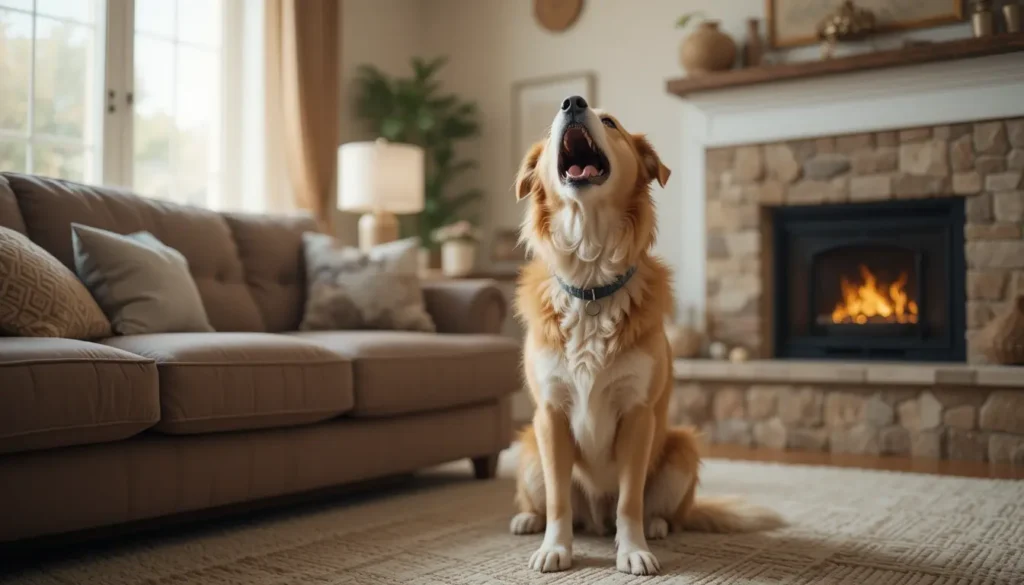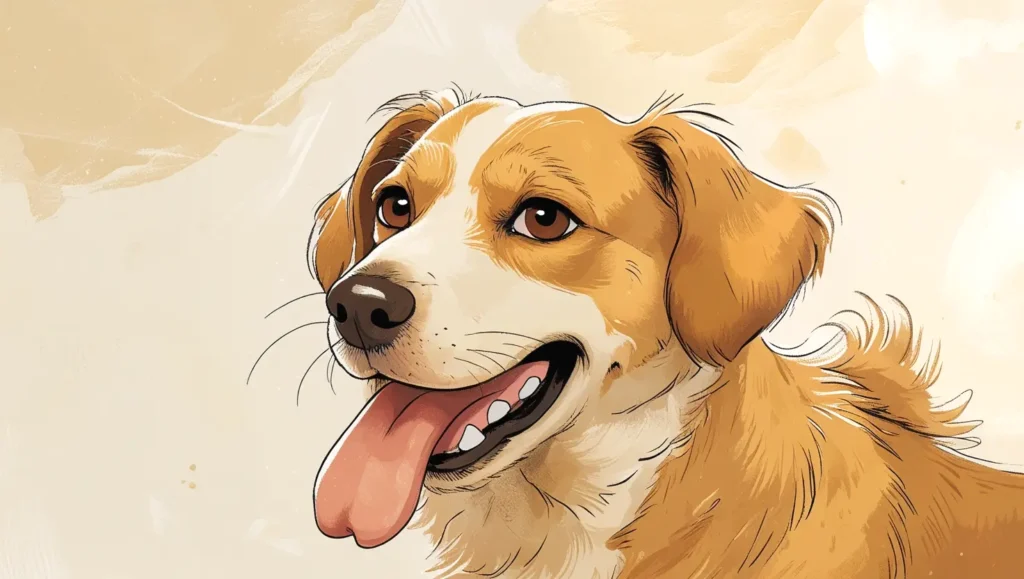Try to recognize signs of illness in dogs. Dogs can’t tell us when something is wrong. Understanding the subtle and not-so-subtle cues they give us is essential for maintaining their health. Early detection of potential health issues can make a significant difference in treatment outcomes and your dog’s quality of life.
Common Signs of Illness in Dogs
Dogs communicate their illness through changes in behavior, physical symptoms, and subtle shifts in daily routines. Recognizing these signs early help you address potential health issues before they escalate into serious problems. Below is an expanded look at some of the most common signs of illness in dogs:
Changes in Behavior
Behavioral changes are one of the first indicators that something might be wrong with your dog. Any deviation from their normal demeanor could signal an underlying issue.
If your once-active dog suddenly seems disinterested in playtime, it may indicate fatigue, pain, or a more serious condition like anemia, infection, and organ dysfunction.
A typically calm and friendly dog that becomes aggressive, may be experiencing pain, discomfort, or stress. This could stem from physical ailments or psychological factors.
Dogs that isolate themselves, may be trying to cope with pain. Conditions like depression, cognitive decline in senior dogs, or systemic diseases can manifest this way.
To better understand behavioral changes, observe how your dog interacts with family members, other pets, and their surroundings. Keep track of when the changes began and whether they coincide with specific triggers.
Appetite Changes
A dog’s eating habits are closely tied to their health condition. Sudden changes in appetite, provide valuable clues about what’s going on internally.
Reduced interest in food is a classic sign of illness. It could indicate gastrointestinal upset, dental pain, infections, kidney disease, or cancer. On the flip side, excessive hunger might point to hormonal imbalances. This can indicate hyperthyroidism or diabetes. Certain medications and high-energy requirements can also increase appetite.
Some dogs may become finicky eaters due to nausea, digestive issues, or simply boredom with their current diet. Experimenting with different textures, flavors, and feeding schedules under veterinary guidance can sometimes resolve this.
If your dog skips meals for more than 24 hours, consult your veterinarian promptly.
Vomiting and Diarrhea
While occasional vomiting or diarrhea isn’t necessarily alarming, it can quickly escalate into a medical emergency if left unchecked.
Persistent vomiting can lead to dehydration and electrolyte imbalances. Causes range from dietary indiscretion to severe conditions like pancreatitis, intestinal blockages, or poisoning. Blood in vomit requires immediate attention.
Loose stools can result from dietary changes, stress, parasites, bacterial infections, or viral illnesses like parvovirus. Chronic diarrhea may indicate inflammatory bowel disease, food allergies, and kidney failure.
When vomiting and diarrhea occur together, dehydration becomes a significant risk.
Monitor your dog’s stool frequency, and color. Note any accompanying symptoms like fever, lethargy, or abdominal pain, and seek veterinary care if symptoms persist beyond 24 hours.
Excessive Thirst or Urination
Polydipsia (excessive thirst) and polyuria (frequent urination) are hallmark signs of several potentially serious health conditions.
Diabetes Mellitus occurs when the body cannot regulate blood sugar levels properly. Affected dogs drink excessively to compensate for elevated glucose levels and urinate more frequently as a result.
Kidneys filter waste products from the bloodstream. When they fail, toxins build up. This results in increased thirst and urination. Older dogs are particularly prone to chronic kidney disease.
Cushing’s Disease in dog results from overproduction of cortisol by the adrenal glands. Symptoms include excessive drinking, urination, panting, and hair loss.
Liver dysfunction can disrupt the body’s ability to metabolize nutrients and eliminate toxins. This contribues to increased thirst and urination.
Track your dog’s water intake and bathroom habits over several days. If you notice a marked increase—or if accidents start happening indoors despite previous house training—schedule a vet appointment to rule out underlying causes.
Weight Loss or Gain

Unexplained weight fluctuations can indicate a variety of health problems. Any sudden or gradual changes in your dog’s weight should be taken seriously.
Diabetes, hypothyroidism, and Cushing’s disease can disrupt your dog’s metabolism. This leads to unexplained weight loss. These disorders require lifelong management with medication and dietary adjustments.
Unfortunately, weight loss can sometimes be an early sign of cancer. To be sure, look for other symptoms like lethargy, loss of appetite, and vomiting. Lymphoma and gastrointestinal tumors cause significant weight loss due to malabsorption of nutrients.
Worms can rob your dog of essential nutrients. Regular deworming and fecal exams are crucial for preventing parasitic infestations.
Liver disease, kidney failure, and inflammatory bowel disease (IBD) can all contribute to weight loss. These conditions affect digestion, nutrient absorption, and the body’s ability to process food efficiently.
On the other hand, sudden weight gain is also a metric to figure illness. Hormonal imbalance can help your dog gain weight. Hypothyroidism can slow down your dog’s metabolism. This leads to weight gain despite normal eating habits. Cushing’s disease causes increased appetite and subsequent weight gain.
A sedentary lifestyle can lead to weight gain. Obesity increases the risk of arthritis, heart disease, and diabetes.
Sudden weight gain could indicate fluid retention caused by heart failure, liver disease, and kidney dysfunction. This type of weight gain is noticeable in the abdomen and limbs.
Regular weigh-ins and body condition scoring are essential for tracking your dog’s weight trends. If you notice significant changes, consult your veterinarian to rule out underlying health issues. Early intervention can prevent more serious complications.
Coughing, Sneezing, and Labored Breathing
Respiratory symptoms can signal a range of health problems. Since dogs rely heavily on their sense of smell and respiratory system, any disruption in these functions can significantly impact their quality of life.
Kennel cough is highly contagious respiratory infection. It is characterized by a persistent, dry, hacking cough. It’s accompanied by gagging or retching. While kennel cough is usually mild and self-limiting, severe cases require antibiotics and supportive care.
Congestive heart failure causes a wet-sounding cough. Small breeds are predisposed to mitral valve disease, which can lead to congestive heart failure.
Tracheal collapse is common in toy breeds like Pomeranians and Yorkshire Terriers. Tracheal collapse causes a honking cough. Managing this condition involves weight control, avoiding irritants, and sometimes surgical intervention.
Bacterial, viral, or fungal pneumonia cause deep coughing, fever, and lethargy. Pneumonia requires prompt veterinary attention. It can quickly become life-threatening if left untreated.
Environmental allergens (pollen, dust mites) and food sensitivities can trigger sneezing, nasal discharge, and itchy skin. Allergy testing and management strategies can help alleviate symptoms.
Grass seeds, foxtails, and other foreign objects lodged in the nasal passages can cause persistent sneezing, nasal discharge, and discomfort. Veterinary removal is necessary to prevent further irritation.
Flat-faced breeds like Bulldogs, Pugs, and Shih Tzus are prone to breathing difficulties due to narrowed airways. Symptoms include noisy breathing, snoring, and exercise intolerance. In severe cases, corrective surgery may be necessary.
Similar to human asthma, allergic bronchitis can cause wheezing, coughing, and labored breathing. Treatment includes corticosteroids, bronchodilators, and environmental modifications.
Blunt force trauma to the chest or neck can damage the respiratory system. This leads to difficulty breathing. Immediate veterinary care is critical in these situations.
Skin and Coat Changes
Skin and coat are also indicators of your dog’s internal health. Healthy dogs typically have shiny coats and smooth, irritation-free skin. Any changes in these areas could point to underlying health issues.
Food allergies, environmental allergens (pollen, mold), and flea allergy dermatitis cause intense itching, redness, and inflammation. Flea prevention and hypoallergenic diets help manage symptoms.
Fleas are a common cause of itching and scratching, especially around the base of the tail. Flea bites can also lead to secondary skin infections and hot spots.
Caused by mites, mange comes in two forms: demodectic (localized hair loss) and sarcoptic (intense itching, scaly skin). Both require veterinary diagnosis and treatment.
Some degree of shedding is normal in dogs. But excessive hair loss indicates hormonal imbalances, nutritional deficiencies, and stress-related alopecia.
Despite its name, ringworm is a fungal infection that causes circular patches of hair loss, scaly skin, and inflammation. It’s highly contagious and requires antifungal treatment. Conditions like pemphigus foliaceus and lupus can cause crusting, scaling, and hair loss. These diseases require immunosuppressive therapy under veterinary supervision.
Secondary bacterial infections accompany allergic reactions. Symptoms include red, inflamed skin, pustules, and foul odor.
Yeast overgrowth causes smelly skin and intense itching. Antifungal medications and regular cleaning are necessary to control yeast infections.
Regular grooming and skin checks help you catch skin and coat issues early. If your dog shows signs of persistent itching, redness, and hair loss, consult your veterinarian for proper diagnosis and treatment.
Eye and Nose Discharge
Clear discharge from the eyes and nose is normal. Abnormal secretions indicate infections, allergies, and foreign objects.
Yellow and green eye or nasal discharge signals a bacterial infection. Conjunctivitis (pink eye) and upper respiratory infections are common culprits. Antibiotics and anti-inflammatory medications may be needed. Chronic sinus infections can cause thick, discolored nasal discharge, sneezing, and facial pain.
Bleeding from the eyes or nose could result from trauma, such as a fight with another animal or injury to the face. Nasal tumors can cause bloody discharge, swelling, and discomfort. Increased intraocular pressure can cause eye swelling, cloudiness, and pain.
Cloudy eyes in older dogs indicate cataracts. Surgery is recommended to restore sight. Scratches or abrasions on the cornea cause redness, cloudiness, and squinting.
Difficulty Moving
Mobility issues can arise from injuries, joint problems, and age-related degeneration. Sprains, strains, and fractures can cause sudden lameness. Rest, ice, and pain management are typically recommended.
Thorns, splinters, and sharp objects embedded in the paw pads can cause limping. Carefully inspect your dog’s feet and remove any foreign objects if possible.
Degenerative joint disease (arthritis) is common in older dogs. Symptoms include stiffness, difficulty rising, and reluctance to jump or climb stairs. Weight management, joint supplements, and anti-inflammatory medications can help alleviate symptoms.
Hip dysplasia is a genetic condition common in large breeds. It leads to joint instability and eventual arthritis. Total hip replacement may be considered in severe cases.
Small breeds like Chihuahuas and Poodles are prone to kneecap dislocation. This causes intermittent lameness. Surgery is required for severe cases.
Bad Breath
Foul-smelling breath is a sign of dental disease. This problem affects up to 80% of dogs by the age of three.
Plaque buildup leads to gingivitis and periodontal disease. This can cause tooth loss and systemic infections. Regular brushing and professional cleanings are essential for prevention.
Decayed teeth cause severe pain, bad breath, and drooling. Root canal therapy may be necessary. Growths in the mouth cause bad breath, difficulty eating, and excessive drooling. Biopsy and imaging are required for diagnosis.
When to See a Veterinarian
It’s important to trust your instincts when it comes to your dog’s health. Even minor symptoms can sometimes escalate into serious conditions if left untreated.
If your dog collapses, has seizures, or experiences severe vomiting/diarrhea, seek emergency care immediately. Any symptom that lasts for more than 24-48 hours should be evaluated by a professional.
Preventive care is equally vital. Regular check-ups, vaccinations, parasite prevention, and proper nutrition go a long way in keeping your dog healthy. Don’t hesitate to ask your veterinarian questions during routine visits to better understand your dog’s specific needs.
Recognizing the signs of illness in your dog is a critical part of being a responsible pet owner. By staying vigilant and proactive, you can address potential health issues before they worsen.




